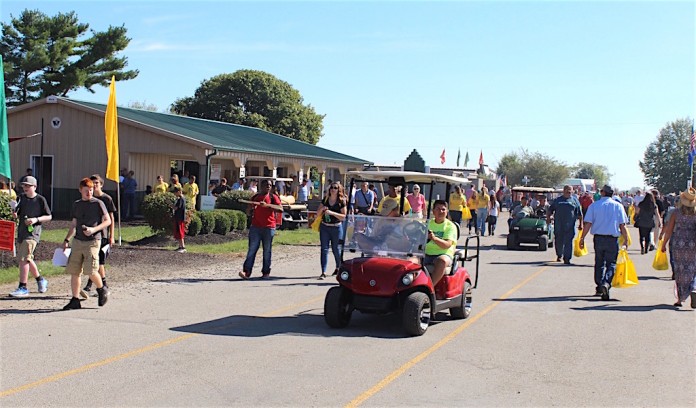LONDON, Ohio — Farmers and the food industry still have two years before the U.S. Department of Agriculture is required to write new food labeling rules to show whether foods were made from Genetically Modified Organisms, but the labeling legislation, which was passed by Congress in July — is already a hot-topic issue.
That same hot topic helped open the 54th Ohio State University Farm Science Review Sept. 20, where a panel of ag economists weighed in on the future impacts of the new labeling rule.
First, there’s still a lot of uncertainty. Although the law requires foods to be labeled, it gives some leniency in the type of label and what it must contain. According to the law, foods can be labeled with text, a symbol or a Quick Response Code (QR Code), which can be read by a smartphone.
“It’s not clear how much this label is going to change what we see in the grocery store,” said Ken Foster, professor and head of the Department of Agricultural Economics at Purdue University.
Want transparency
Foster said the uncertainty is something that will have to be worked out in the coming year, but one thing he is certain of is that consumers want transparency.

Even though GMO-approved crops have been proven safe, and have a lot of incentives like better yield and being better for the environment, Foster said farmers need to remember to communicate those points to the non-farm public.
“We’re not communicating that to consumers,” he said, adding “most of the people in our society today didn’t grow up on a farm.”
Segregating grain
The panelists expect the demand for non-GMO crops and foods to continue growing, and with that growth comes new challenges, like how to segregate the different kinds of grains, and how retailers will deal with the multitude of new labels.
Andy Vollmar, food and feed ingredient manager for The Andersons Grain Group, said he sees continued growth in the non-GMO market, but also new challenges. Although The Andersons have accepted non-GMO grains for years, he said many smaller, country mills are not yet to that point. To handle both GMO and non-GMO, a mill needs appropriate storage space, and an appropriate way of keeping the two types of grains separate.
Grocery stores
The Andersons also operate their own chain of retail grocery stores. Vollmar said it used to be that there were one or two kinds of a food like cereal — but today — the number of labels on foods “only continues to rise.”
This means retailers need more space for the same foods — and have to apply more effort to keep everything separate.
Vollmar said he’s definitely seeing an interest by the consumer, to trace where their food comes from, and that includes things like whether the food was made from GMO crops.
“They want to be able to understand how that traces back to the grower,” Vollmar said.
Ian Sheldon, the Andersons Chair in Ag Marketing at Ohio State, said the GMO bill was basically a “compromise,” between parties that wanted more strict food labeling, and parties that wanted less labeling.
National law
The bill essentially preempted states from making their own GMO laws, which was happening at the time in Vermont, where a bill called for more stringent labeling, and specific wording.
As a compromise, Sheldon said the federal law gives the food industry a good opportunity to “show that they’re being transparent with consumers,” while still having some flexibility about how they label their foods.
It remains to be seen how the new labeling law will affect food prices. Several on the panel said they expect consumers to continue paying a premium for non-GMO, because the consumers perceive a benefit.
But as Sheldon pointed out, the new labeling could also raise the food prices for some commodities — potentially hurting people of lower income.
The Farm Science Review continues through Sept. 22 at OSU’s Molly Caren Agricultural Center in London.













“Even though GMO-approved crops have been proven safe,”
Why that over 50 country’s of the world have banned GMO’s ??
“SAFE” like the vaccinations ?? “SAFE” like the USA Police State ??
“SAFE” like 911 false flag ?? http://www.911truth.org” (40 questions)
“SAFE” by that we cannot audit our money = Federal Reserve is a Private bank = Rothschild cartel….
I do NOT trust the term “Safe” in USA anymore !!
I prefer proven by the transparency, including citizen groups, of researching of the Real Truth in USA today !!